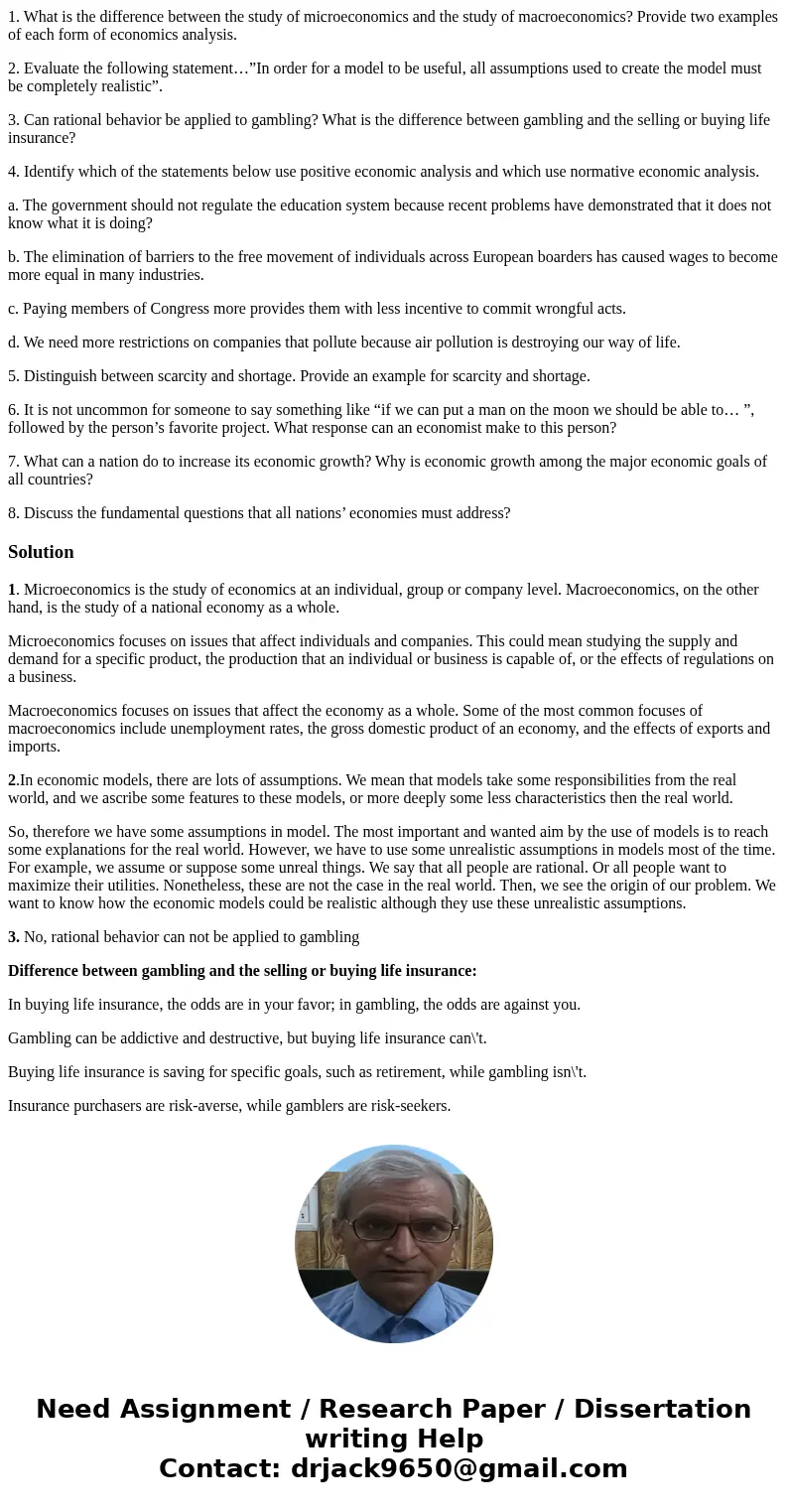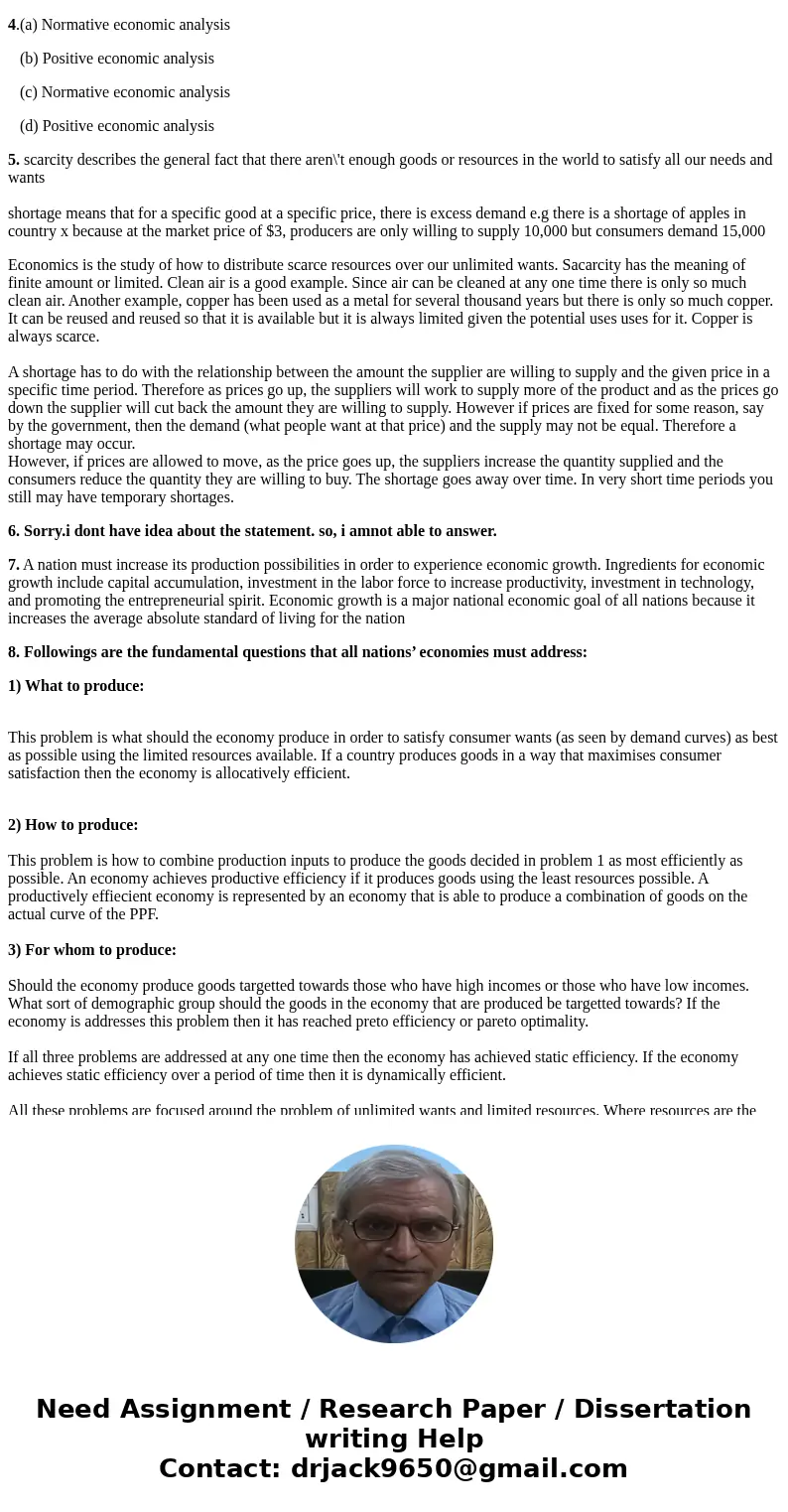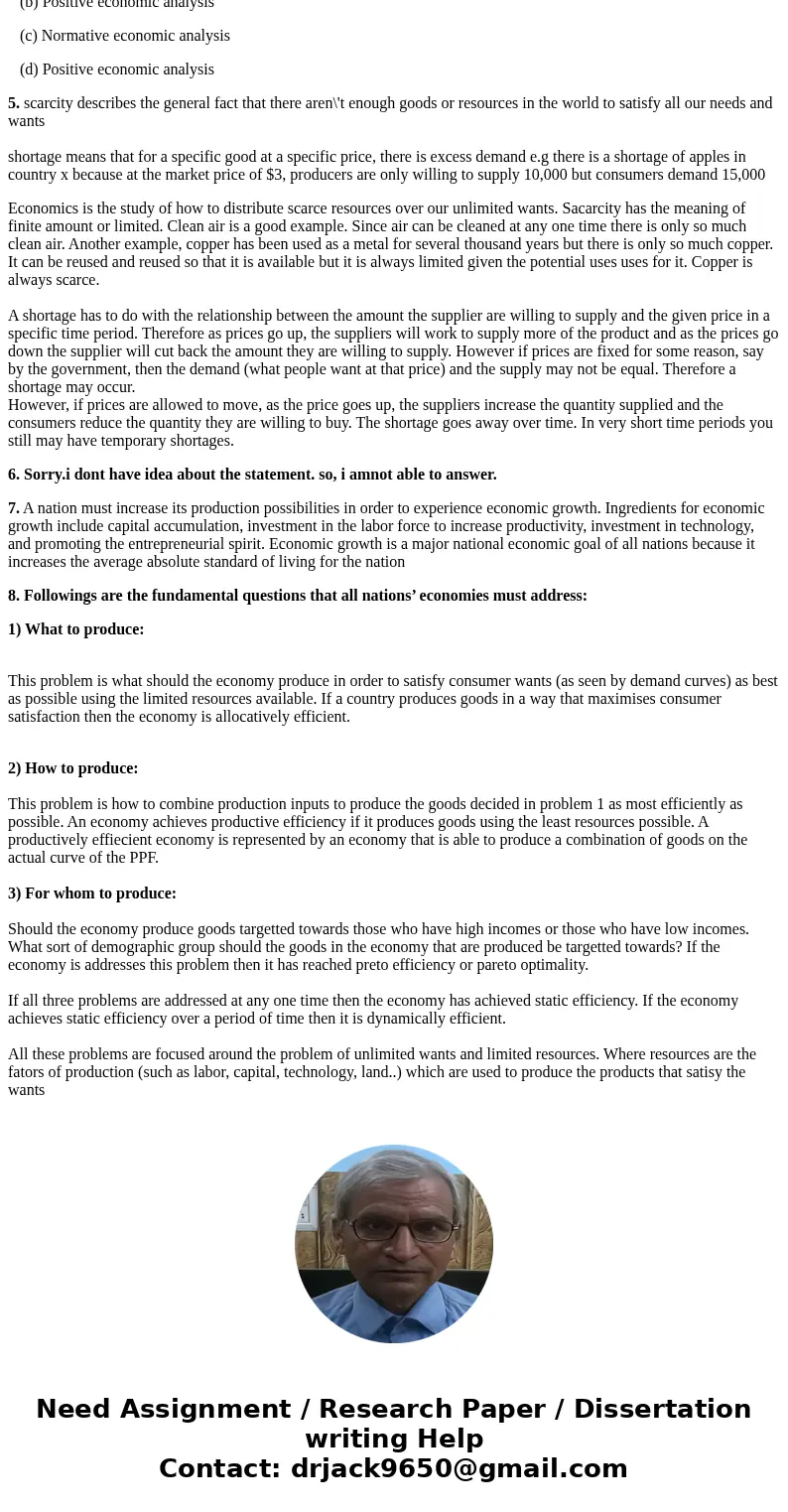1 What is the difference between the study of microeconomics
1. What is the difference between the study of microeconomics and the study of macroeconomics? Provide two examples of each form of economics analysis.
2. Evaluate the following statement…”In order for a model to be useful, all assumptions used to create the model must be completely realistic”.
3. Can rational behavior be applied to gambling? What is the difference between gambling and the selling or buying life insurance?
4. Identify which of the statements below use positive economic analysis and which use normative economic analysis.
a. The government should not regulate the education system because recent problems have demonstrated that it does not know what it is doing?
b. The elimination of barriers to the free movement of individuals across European boarders has caused wages to become more equal in many industries.
c. Paying members of Congress more provides them with less incentive to commit wrongful acts.
d. We need more restrictions on companies that pollute because air pollution is destroying our way of life.
5. Distinguish between scarcity and shortage. Provide an example for scarcity and shortage.
6. It is not uncommon for someone to say something like “if we can put a man on the moon we should be able to… ”, followed by the person’s favorite project. What response can an economist make to this person?
7. What can a nation do to increase its economic growth? Why is economic growth among the major economic goals of all countries?
8. Discuss the fundamental questions that all nations’ economies must address?
Solution
1. Microeconomics is the study of economics at an individual, group or company level. Macroeconomics, on the other hand, is the study of a national economy as a whole.
Microeconomics focuses on issues that affect individuals and companies. This could mean studying the supply and demand for a specific product, the production that an individual or business is capable of, or the effects of regulations on a business.
Macroeconomics focuses on issues that affect the economy as a whole. Some of the most common focuses of macroeconomics include unemployment rates, the gross domestic product of an economy, and the effects of exports and imports.
2.In economic models, there are lots of assumptions. We mean that models take some responsibilities from the real world, and we ascribe some features to these models, or more deeply some less characteristics then the real world.
So, therefore we have some assumptions in model. The most important and wanted aim by the use of models is to reach some explanations for the real world. However, we have to use some unrealistic assumptions in models most of the time. For example, we assume or suppose some unreal things. We say that all people are rational. Or all people want to maximize their utilities. Nonetheless, these are not the case in the real world. Then, we see the origin of our problem. We want to know how the economic models could be realistic although they use these unrealistic assumptions.
3. No, rational behavior can not be applied to gambling
Difference between gambling and the selling or buying life insurance:
In buying life insurance, the odds are in your favor; in gambling, the odds are against you.
Gambling can be addictive and destructive, but buying life insurance can\'t.
Buying life insurance is saving for specific goals, such as retirement, while gambling isn\'t.
Insurance purchasers are risk-averse, while gamblers are risk-seekers.
4.(a) Normative economic analysis
(b) Positive economic analysis
(c) Normative economic analysis
(d) Positive economic analysis
5. scarcity describes the general fact that there aren\'t enough goods or resources in the world to satisfy all our needs and wants
shortage means that for a specific good at a specific price, there is excess demand e.g there is a shortage of apples in country x because at the market price of $3, producers are only willing to supply 10,000 but consumers demand 15,000
Economics is the study of how to distribute scarce resources over our unlimited wants. Sacarcity has the meaning of finite amount or limited. Clean air is a good example. Since air can be cleaned at any one time there is only so much clean air. Another example, copper has been used as a metal for several thousand years but there is only so much copper. It can be reused and reused so that it is available but it is always limited given the potential uses uses for it. Copper is always scarce.
A shortage has to do with the relationship between the amount the supplier are willing to supply and the given price in a specific time period. Therefore as prices go up, the suppliers will work to supply more of the product and as the prices go down the supplier will cut back the amount they are willing to supply. However if prices are fixed for some reason, say by the government, then the demand (what people want at that price) and the supply may not be equal. Therefore a shortage may occur.
However, if prices are allowed to move, as the price goes up, the suppliers increase the quantity supplied and the consumers reduce the quantity they are willing to buy. The shortage goes away over time. In very short time periods you still may have temporary shortages.
6. Sorry.i dont have idea about the statement. so, i amnot able to answer.
7. A nation must increase its production possibilities in order to experience economic growth. Ingredients for economic growth include capital accumulation, investment in the labor force to increase productivity, investment in technology, and promoting the entrepreneurial spirit. Economic growth is a major national economic goal of all nations because it increases the average absolute standard of living for the nation
8. Followings are the fundamental questions that all nations’ economies must address:
1) What to produce:
This problem is what should the economy produce in order to satisfy consumer wants (as seen by demand curves) as best as possible using the limited resources available. If a country produces goods in a way that maximises consumer satisfaction then the economy is allocatively efficient.
2) How to produce:
This problem is how to combine production inputs to produce the goods decided in problem 1 as most efficiently as possible. An economy achieves productive efficiency if it produces goods using the least resources possible. A productively effiecient economy is represented by an economy that is able to produce a combination of goods on the actual curve of the PPF.
3) For whom to produce:
Should the economy produce goods targetted towards those who have high incomes or those who have low incomes. What sort of demographic group should the goods in the economy that are produced be targetted towards? If the economy is addresses this problem then it has reached preto efficiency or pareto optimality.
If all three problems are addressed at any one time then the economy has achieved static efficiency. If the economy achieves static efficiency over a period of time then it is dynamically efficient.
All these problems are focused around the problem of unlimited wants and limited resources. Where resources are the fators of production (such as labor, capital, technology, land..) which are used to produce the products that satisy the wants



 Homework Sourse
Homework Sourse